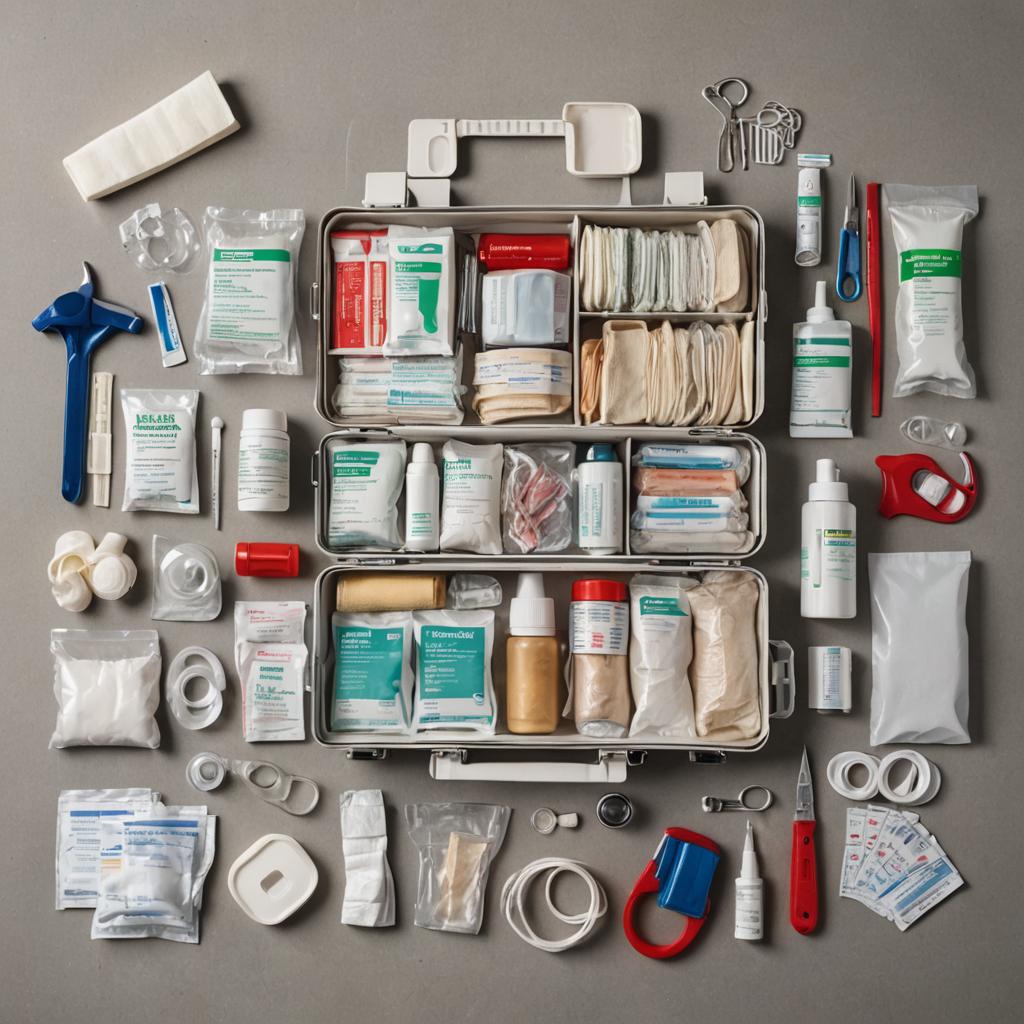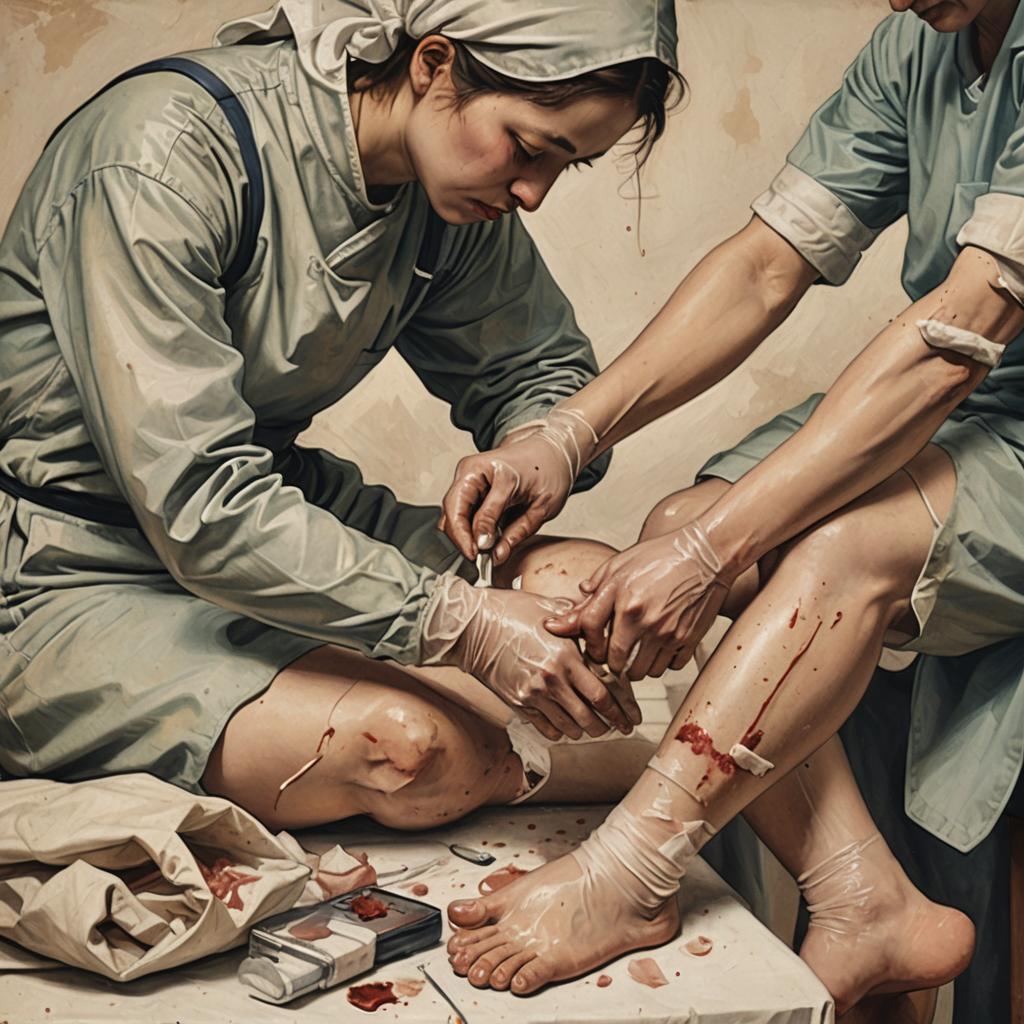The Importance of Wound Care and Infection Prevention
Today’s Lesson: Insights from the Home Doctor Guide by Dr. Maybell Nieves
In an age where healthcare access can be uncertain and emergencies strike without warning, the Home Doctor Guide by Dr. Maybell Nieves is a beacon of knowledge and preparedness. This comprehensive manual offers practical advice for handling medical situations at home, ensuring you’re equipped to manage health crises with confidence.
Wound care is a crucial aspect of first aid and home medical care. Properly treating wounds and preventing infection can make a significant difference in the healing process and overall health. The Home Doctor Guide provides detailed instructions on how to care for various types of wounds and prevent infections effectively.

Understanding Wound Types and Treatments
Different types of wounds require different treatment approaches. Understanding how to properly care for cuts, scrapes, burns, and other injuries can prevent complications and promote faster healing.
Cuts and Scrapes
Cleaning the Wound: The first step in treating a cut or scrape is to clean the wound thoroughly to prevent infection. The Home Doctor Guide recommends using clean water and mild soap for this purpose.
Applying Antiseptics: After cleaning, applying an antiseptic can help kill any remaining bacteria. The guide provides a list of recommended antiseptics and how to use them.
Dressing the Wound: Properly dressing the wound with a sterile bandage protects it from dirt and bacteria. The “Home Doctor Guide” offers tips on choosing the right bandages and how to apply them.
Burns
Cooling the Burn: For minor burns, running cool water over the burn area for at least 10 minutes can reduce pain and swelling. The guide explains the proper steps for cooling burns and when to seek medical attention.
Using Burn Ointments: Applying burn ointments can soothe the skin and promote healing. The Home Doctor Guide provides recommendations for effective burn treatments.
Covering the Burn: Keeping the burn covered with a sterile, non-stick bandage can protect it from infection. Learn more about burn care in the guide.
Puncture Wounds
Cleaning and Monitoring: Puncture wounds are prone to infection and should be cleaned thoroughly. The guide details how to clean puncture wounds and the signs of infection to watch for.
Seeking Medical Attention: Puncture wounds can be serious, especially if they are deep or caused by a dirty object. The Home Doctor Guide advises when to seek professional medical help.
Preventing Infections
Preventing infections is a key aspect of wound care. The Home Doctor Guide emphasizes the importance of hygiene and proper wound management to prevent infections.
Hygiene Practices
Hand Washing: Always wash your hands before and after treating a wound to prevent the spread of bacteria. The guide provides a detailed hand-washing technique to ensure thorough cleaning.
Using Gloves: Wearing disposable gloves when treating wounds can provide an extra layer of protection. The Home Doctor Guide recommends keeping gloves in your first aid kit.
Recognizing Infection Signs
Redness and Swelling: Redness, swelling, and warmth around the wound area can indicate an infection. The guide lists common signs of infection and what to do if they appear.
Pus and Discharge: The presence of pus or unusual discharge from the wound is a clear sign of infection. The Home Doctor Guide explains how to handle infected wounds.
Seeking Medical Help
When to See a Doctor: Some wounds and infections require professional medical attention. The guide helps you identify when it’s time to seek help from a healthcare provider.
Follow-Up Care: Proper follow-up care is essential for ensuring the wound heals correctly. The Home Doctor Guide provides tips for monitoring wounds and maintaining good hygiene during the healing process.
Building a First Aid Kit
Having a well-stocked first aid kit at home is essential for effective wound care. The Home Doctor Guide provides a comprehensive list of items to include in your first aid kit.
Essential Supplies
Bandages and Dressings: Various sizes of sterile bandages and dressings are crucial for wound care. The guide recommends specific types to keep in your kit.
Antiseptics and Ointments: Keeping antiseptics and antibiotic ointments on hand can help prevent infections. The Home Doctor Guide lists essential antiseptics to include.
Tools and Accessories: Items like scissors, tweezers, and gloves are important for treating wounds. The guide provides a detailed checklist of tools to include in your first aid kit.

Storing Your Kit
Accessible Location: Storing your first aid kit in an easily accessible location ensures quick response during emergencies. The Home Doctor Guide offers tips on where to keep your kit.
Regular Maintenance: Checking and restocking your first aid kit regularly ensures you have the necessary supplies when needed. The guide explains how to maintain your kit effectively.
Empower Yourself with Knowledge
Taking charge of your health starts with knowledge. The Home Doctor Guide by Dr. Maybell Nieves is an invaluable resource that equips you with the skills to manage wounds and prevent infections at home. By integrating these practices into your daily life, you can improve your health and well-being, making the world a better place.
Don’t wait for an emergency to strike. Equip yourself and your loved ones with the knowledge and tools needed to handle wounds and prevent infections effectively. Purchase the “Home Doctor Guide” today, start building your first aid kit, and create a healthier lifestyle. By doing so, you are taking a crucial step toward ensuring a safer, healthier future for everyone around you.
YOUR FEEDBACK IS IMPORTANT TO US!
Hi there!
Thank you for visiting our Christian Resource website. We’re building a special place here that brings Christians together from all walks of life, and your help would be great!
What we need from you are suggestions. Ideas for things we can include on our site that would help you, and other Christians, to learn, grow, and feel united in faith. Maybe there’s a specific topic you’d like to see covered, a prayer that touched your heart, or a Christian song that’s been on your mind.
This is a place for all of us, so let’s keep it friendly. We’re cool with different opinions – that’s how we learn from each other! But let’s remember to share our thoughts respectfully, with the kind of love that Jesus showed us. No room for ugliness or bashing here.
We appreciate your time and look forward to hearing what great ideas you have to make our site even better. Together, we can create a place that truly serves and unifies the Christian community.
